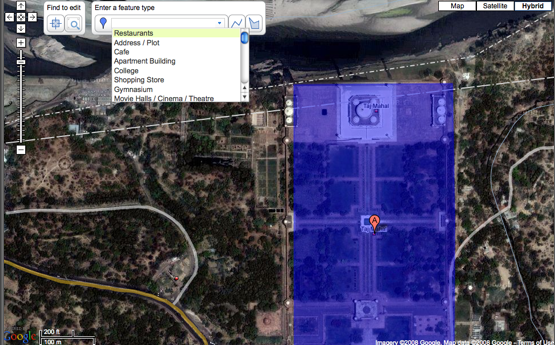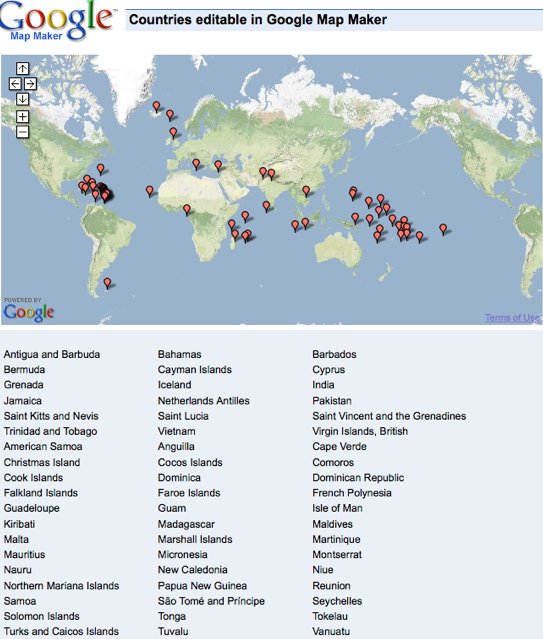 There are a variety of time tracking tools available today. The first type are the ones targeted at businesses and professionals for tracking amount of time spent on a particular project so they can bill their clients accordingly. The second variety are for net junkies with a need to track time spent on a particular activity online, say emailing, blogging, micro-blogging, reading RSS feeds, browsing, or just plain social networking. We searched the Web for the second variety and present below six very helpful tools to track your time spent online that are free and simple to use.
There are a variety of time tracking tools available today. The first type are the ones targeted at businesses and professionals for tracking amount of time spent on a particular project so they can bill their clients accordingly. The second variety are for net junkies with a need to track time spent on a particular activity online, say emailing, blogging, micro-blogging, reading RSS feeds, browsing, or just plain social networking. We searched the Web for the second variety and present below six very helpful tools to track your time spent online that are free and simple to use.
Whichone is your favorite? Do you use any other time tracking tools? Let us know in the comments.
8aWeek

8aWeek is a neat Firefox toolbar that tracks your online browsing habits. If you feel that your social media participation is becoming excessive and want to restrict yourself, you can get this toolbar, see which sites you spend most of your time on, and set the restriction timings for each. You can also use the toolbar to save sites that you can check out later. This time tracking tool does the work automatically so you don’t need to add tasks manually. That spells a lot of convenience.
Wakoopa
Wakoopa is a desktop application that tracks the time you spend using various applications like your browser, RSS reader, email client, games, and more. It also doubles up as a social networking site. Setting up Wakoopa is hassle free and once installed, it runs quietly on your system tray and collects information automatically.
You have an online profile page where you can view your tracked activitiy records, upload your pictures, add contacts and form teams, and write reviews. There are various widgets you can take advantage of such as ‘My top 10 software’ badge, ‘My recently used software’ badge, a Facebook application, etc. You can also view the most used software by Waakoopa users and check out other users’ stats. Wakoopa also displays interesting items such as ‘Software you might like,’ ‘People like you,’ ‘Reviews of your software,’ and ‘New versions of your software’ on your dashboard that you might find useful. When you go to a particular software’s individual page, you can see the software manufacturer’s details, versions, download url, usage stats by Waakoopa users, popularity chart, and reviews.
RescueTime

Rescue Time is another feature loaded desktop application for Windows, Mac, and Linux that tracks your activities. What differentiate this from Waakoopa is that it helps you track not only applications but websites as well. You can set the number of hours you want to spend in a day on a particular site and Rescue Time will alert you on your email, RSS reader, or by SMS when you run out of time. You can create groups and compare your online stats with other users. There are Rescue Time widgets for blogs, iGoogle, and Netvibes. You can also create a white-list of sites that you want Rescue Time to pay attention to.
TimeTracker
TimeTracker is a simple Firefox addon that tracks the time you spend online browsing by running quietly on your Firefox status bar. You can see the time tracked by the day, since installation, or since your last reset. There are idle timeout, filter, and pause features as well. This addon basically shows your online browser time and doesn’t go beyond that, meaning you cannot track time spent on an individual site. However, for those seeking something simple, it might just be fine.
MeeTimer

MeeTimer is another cool Firefox addon like TimeTracker, but it also shows how much time you have spent on each individual website, in addition to showing your overall time spent online. You can also place site urls into various groups and configure MeeTimer to show you a warning message when you visit a particular group or site.
OnlineStopwatch

Online Stopwatch is basically a neat tool that provides a timer and a stopwatch. The stopwatch creates an alarm bell after the countdown finishes. You can use Online Stopwatch on its site or as a Google gadget, Live.com gadget, or a Vista sidebar gadget. While it is as simple as any online timer can get and comes without any usage trends, the beauty is that you can use it in any manner you want, like setting a timer for your online browsing or monitoring how long it takes to draft a blog post.
Courtesy: Mashable

 There are a variety of time tracking tools available today. The first type are the ones targeted at businesses and professionals for tracking amount of time spent on a particular project so they can bill their clients accordingly. The second variety are for net junkies with a need to track time spent on a particular activity online, say emailing, blogging, micro-blogging, reading RSS feeds, browsing, or just plain social networking. We searched the Web for the second variety and present below six very helpful tools to track your time spent online that are free and simple to use.
There are a variety of time tracking tools available today. The first type are the ones targeted at businesses and professionals for tracking amount of time spent on a particular project so they can bill their clients accordingly. The second variety are for net junkies with a need to track time spent on a particular activity online, say emailing, blogging, micro-blogging, reading RSS feeds, browsing, or just plain social networking. We searched the Web for the second variety and present below six very helpful tools to track your time spent online that are free and simple to use. 




 Google Earth is getting a nice plug from Olympic Gold Medal cyclist Kristin Armstrong. When she did her time trials in December, 2007 in China, she took along her husband’s GPS unit to capture the elevation along the route. Then she used that data to find the best training route back home. In a guest post on the Google Lat-Long blog,
Google Earth is getting a nice plug from Olympic Gold Medal cyclist Kristin Armstrong. When she did her time trials in December, 2007 in China, she took along her husband’s GPS unit to capture the elevation along the route. Then she used that data to find the best training route back home. In a guest post on the Google Lat-Long blog,